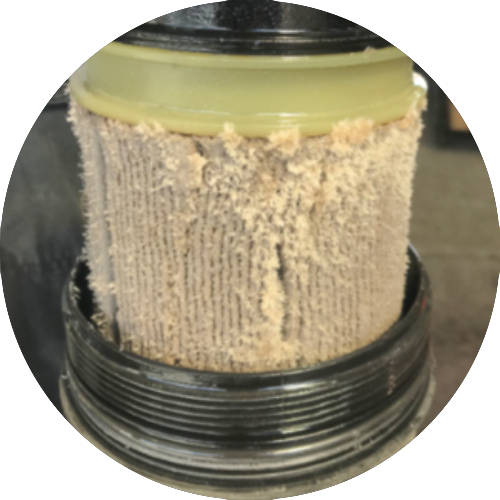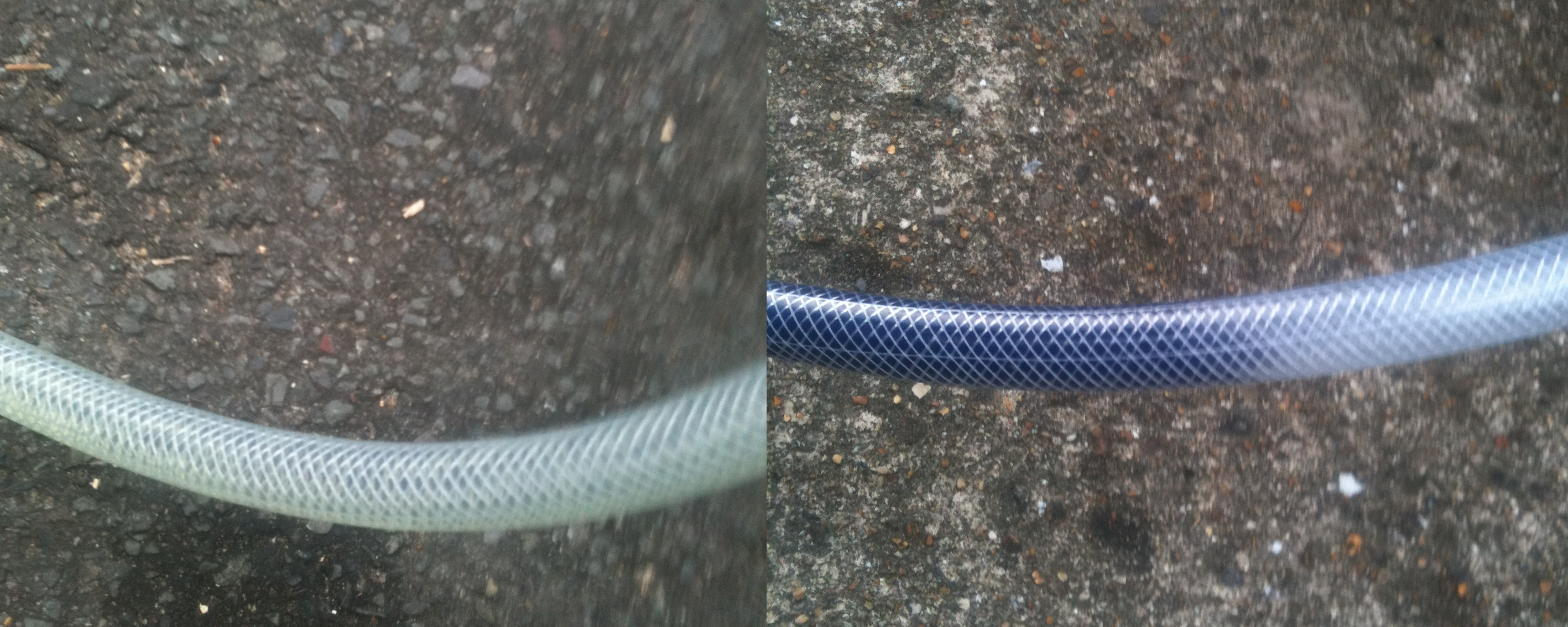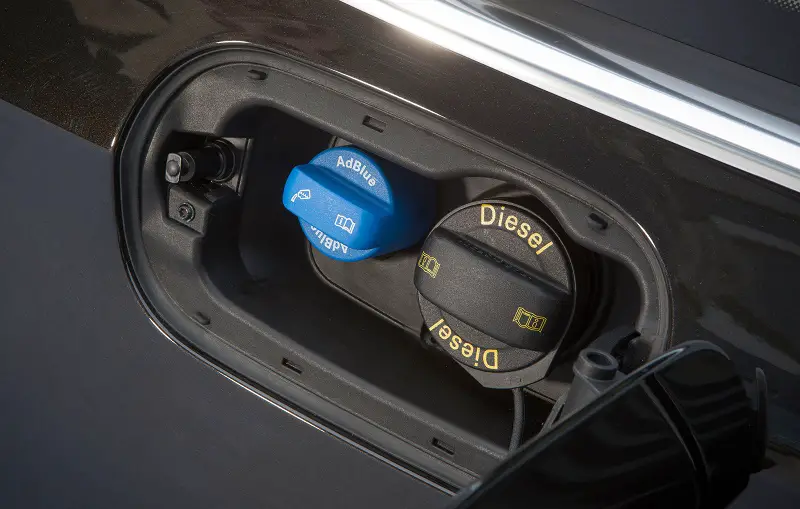AdBlue in Fuel Tank by mistake?
You'll soon be back on the road
Call for immediate help: 0333 366 1243

Adblue in fuel tank by mistake? You'll soon be back on the road
Mobile Unit in your area now
 Put Adblue into your diesel tank ?
Put Adblue into your diesel tank ?
We come & fix it, while you wait
🟠 Mobile Unit in your area now
🟠 We get you right back on your journey
🟠 Average arrival time 46 minutes
🟠 Helping motorists for 15 years
🟠 ISO 9001 & 14001 CERTIFIED
AdBlue causes serious damage if it gets into your diesel tank. Our specialist unit can be with you quickly to fix it, and get you going - usually in less than an hour.
AdBlue in fuel tank - What to do:
Avoid starting the car, or park safely and turn off the engine
Call our hotline on 0333 366 1243
Make yourself and passengers safe and comfortable
Wait for our mechanic to arrive - typically within 45 mins
Our mechanic brings specialist equipment to fully empty your fuel tank safely - including flushing fuel lines, filters and pumps.
And we'll give you the correct fresh fuel so you can drive on. It all takes less than an hour, including the re-start procedure. Once done, your car will be just fine.
We're the country's leading specialists. We'll fix it for you now - so you can get on with your journey.
Just make yourself safe and call us - we'll be with you soon.
It's all too easy to pour AdBlue into the fuel tank. But it’s not a fuel additive, and it causes serious damage. The only thing to do is get it removed as quickly as possible.

The effect of AdBlue on a fuel filter
Symptoms of AdBlue in fuel tank:
Engine runs poorly after refuelling, loss of engine power
White smoke in exhaust after filling up
Dashboard engine warning light
Fuel pump failure, Vapour Lock, Misfires and blocked fuel lines
Car refuses to start after refuelling or when it has cooled down
Long-term effects of AdBlue in your fuel system can include degrading of seals, damage to pumps, injectors and cylinders and potential catastrophic engine failure
Provided you act quickly there will be no damage to your car. You can forget it ever happened and just drive on as normal.
In rare cases some follow-up work might be recommended - our mechanic will advise you if that's needed. He'll also give you our number for any questions that might come up.
Adblue is one third urea and two thirds deionized water. That acid solution gets passed through your engine along with the fuel - with predictable results. Starting the engine will make the problem worse. Call us for a fast solution.
 🟠 UK's biggest independent wrong fuel specialists
🟠 UK's biggest independent wrong fuel specialists
🟠 5-star ratings on TrustPilot, Reviews-io
🟠 Full after-purchase support
🟠 Trusted by Insurers, Fleet Managers, Hire companies
🟠 Specialising in Wrong Fuel for 15 years
If you have any questions, there's a list of common concerns and answers below. For example, "have I damaged my engine?" Or "will this affect my warranty?" See our 'common questions' below, or call us on 0333 366 1243

AdBlue is used to reduce harmful diesel emissions. It consists of a solution of distilled water and urea. It is non-toxic, colourless, with a slightly sweet smell. Unfortunately it can do a lot of damage inside your engine.
Fuel Fixer Ltd has been operating for more than 10 years, and is approaching a quarter of a million rescued motorists
Our network has grown from one van in 2014 to fully equipped fleet covering England, Scotland, Wales and Ireland. Continental operations include Belgium and Germany.
 🟠 Environment Agency accredited
🟠 Environment Agency accredited
🟠 APEX, Safety Passport, CARS, EcoStar Approved
🟠 Fully insured
🟠 The leading wrong fuel specialists
🟠 Fully equipped mobile units nationwide
Your call will be answered by knowledgable staff in our Sussex headquarters. They can give up-to-the minute arrival details for our technician, and follow-up aftercare.
Wrong fuel facts:
Insurers say 24% of men have misfueled at least once, but only 17% of women
Petrol and diesel both come from crude oil - they go back together very rapidly if mixed in your tank
Our own tests show that petrol starts to visibly degrade fuel lines and seals in diesel engines within just a few hours
Safety features in modern car designs make it hard to remove all fuel in the tank. FuelFixer pioneered the technology to accomplish this without needing garage work.
Our friends at the AA say 150,000 UK motorists misfuel every year
 Want to know more? See our list of common questions below.
Want to know more? See our list of common questions below.
For example, "Have I damaged my engine?", "What exactly does petrol do to a diesel engine?", or "Will this affect my warranty?" See the answers below, or call us on 0333 366 1243
Common questions
AdBlue is a liquid that helps to remove nitrous oxide - a poisonous gas - from your car's exhaust. It is used to clean exhaust fumes - it is definitely not a fuel additive.
It works to convert nitrogen oxide emissions in the exhaust gas of diesel engines, into nitrogen and water. A particulate filter then further reduces solid particulates from the vehicle's exhaust emissions.
It mostly consists of ionised water and also contains urea, which is corrosive to fuel system pipes and seals. Furthermore it is prone to crystallisation, clogging injectors and fuel filters.
If you have AdBlue in your diesel tank, call us now for immediate assistance. Our phones are manned 24/7 and our average time for getting help to you is 46 minutes. We aim to get you back on the road within 90 minutes of receiving your call.
Answer: Provided you act quickly, you're very unlikely to suffer any damage. In the great majority of cases the car will be up and running again as soon as we have drained the adblue-contaminated fuel from the system.
It's best if you haven't started your car, as that means there's virtually no chance of damage. Even if you have started it, and maybe driven for a bit before noticing something was wrong, the chances of any lasting damage are slim. If you somehow managed to get home but then the car wouldn't re-start, you'll still be fine - but call us and get the wrong fuel removed as soon as you can.
It's not advisable to continue to try and start the car, or to leave the contaminated fuel in the system for any length of time.
Answer: The small amount of diesel in your fuel lines, and slightly mixed fuel in your tank can carry you a short distance.
But once the petrol has traveled through the low pressure sender pump, then the fuel lines, up to and through the filter (which holds about a pint of fuel), through the hoses to the high pressure pump, thru the pump, into the common rail reservoir, and finally through the high pressure lines into the combustion chamber - that’s normally the exact point that the engine stops turning. This is what happens if you put petrol in a diesel car. Petrol in a diesel system is bad news - it removes engine lubricants and corrode seals.
For these reasons, the because you likely want to finish your journey and continue using your car, the wrong fuel needs to be removed fully.
In the old days you could siphon petrol out of your fuel tank by sucking on a length of hosepipe but, besides the taste being quite evil, modern fuel tank designs make this unfeasible. It takes specialist equipment and expertise to do the job properly now.
Answer:: These pictures show hoses used to empty misfueled diesel tanks (both containing more petrol than diesel). The photo on the left shows the petrol/diesel when removed after a short time. The photo on the right shows condition when removed after one day.

The black colour in the right-hand photo is caused by rubber and plastic dissolved from the fuel lines - an alarming amount of corrosion in a matter of only hours. Replacing these rubber and plastic seals would be a costly undertaking, while this corrosion could lead to very serious problems.
Answer: A environment agency licence is required to transport and store the mixed fuel we remove. It has to be securely and safely stored and is then ultimately re-refined and returned to the fuel supply chain.
Answer: Both are bad news.
In small quantities, and depending on the individual engine design, wrong fuel does different things in petrol and diesel engines. In the short term, petrol in a diesel will stall it, or depending on the mixture it might just still run, but with reduced power and sounding like a bag of spanners. Diesel in a petrol car will make it lose power, and run flat.
The worst case scenarios (and these are the WORST) are:
1) Petrol in a diesel pump will eventually damage the pump by corroding rubber an dplastic compoments and by removing the oily lubrication that diesel fuel provides - If you are unlucky enough to get a mix that just runs. You would also have to do a fair amount of driving with a heavy foot, and be oblivious to the car’s behaviour. The same issues would sooner or later require replacement of: common rail pump, piezo injectors, fuel lines, and high pressure fuel pump (this last operates at around 28 thousand PSI of pressure and is a highly engineered, relying on passage of diesel for its lubrication. Petrol does not lubricate - in fact it dissolves the oils in diesel - hence petrol is good for cleaning out oil stains. No lubrication means metal grinding on metal in a high pressure environment. The metal chafe is then drawn thru to the piezo injectors and ruins them as well, and on through the cylinder linings. This level of damage is rare, but horribly costly.
2) Diesel in petrol worst case scenario: the diesel will enter the cylinder and not burn, it will slide past the piston rings, into the oil sump and therefore the cars oil system. It will then increase the oil level to a point that could cause total engine failure (mangled rods, bent pistons, complete block failure) - or the thinning of the oil can reduce lubrication to the engine leading to a full seizure, big end failure, and/or ruined propshaft. This extreme damage would not be an easy thing to achieve - the car would be very low on power and not running right, you would have to do a good bit of driving in it to achieve the above. But it's not what you want going on under the bonnet.
In both cases, the cost of removing the wrong fuel is tiny in comparison - and you will meantime be driving around in a car that actually works.
Answer: Sadly, some main dealers and “tooth sucking garages” look on misfuel cases as a winning lottery ticket. We've heard of people having their misfueled cars collected by main dealers from petrol station forecourts (cars that had not even been started and had only ten or twenty pounds of wrong fuel added). Entirely unnecessary replacements of very expensive components have then been carried out, at great expense and inconvenience. Hopefully, for the owners, the insurance companies picked up the tab. That's fine until you lose your no-claims bonus, or it comes time to sell your car and have to explain why it needed so much major work.
It's not economic for most garages to keep the specialist equipment we use to fully drain fuel from a car - many of them find it simpler and faster to call us to do the job.
Answer: It's not recommended, but yes you can try it. If it's just a small amount of wrong fuel in a full tank of the correct fuel - yes, you might be OK. You'll find the engine tends to run poorly, and you may well see some dashboard warning lights which will have to be cancelled at a garage. Also when you next try to start the car with a cold engine, you may find the engine won't fire.
Having said that, what you risk is corrosion of rubber hoses and plastic seals, and possible damage to fuel pumps and engine components. Any of those are going to be fairly expensive to fix. Some will be very expensive.
The idea of paying for a brim-full tank of fuel that might have to be removed straight away is also something to consider.
And it is very much hit and miss whether you will even be able to get the car going. Calling us to fix the problem fully, and get you properly back on the road, is still likely to be your best, and cheapest option.
Answer: You probably feel like a muppet right now, but the best estimates suggest over 300,000 people a year in the UK put the wrong fuel in their car. The pumps look similar, you may be distracted, you are in a rush... there are plenty of very valid excuses you can give yourself. We do get a lot of calls from mums with toddlers in the car, but we also get plenty from professional gents who practically live for their cars. Not to mention the occasional tanker driver, ambulance, or taxi driver. And then there's the boat owners who filled their huge tanks with the wrong fuel. So all we can tell you is you really are not alone.
We'll do our best to deal with your problem very quickly, and let you put it in your rear-view mirror.
Answer: Neither. They blend very rapidly in the tank and it becomes a fairly even mixture, although they are different compounds. They both come from crude oil, and spend millions of years in the ground as part of one and the same thing. Technically speaking, the carbon chain in diesel is longer, but only refining separates them out, and once recombined they will mix and stay together until re-refined.
Answer: Yes, this used to be common winter practice until about the 1970's. Petrol does indeed work as an ad-hoc winter fuel additive for diesel in remote and freezing areas, such as the Arctic.
However diesel engines in those days were low-tech brutes. They didn't have things like the high-pressure pumps that make today's diesel engines smooth and efficient. Today's engines are snowflake prima donnas by comparison.
In any case, Winter Fuel Additive is now standardly added to our supplies of diesel by the refiners as early as September, so there's no need to try the old home remedies.
Answer: Your Engine Management light can signal a variety of problems, small or large. The Engine Management computers themselves are not very informative: they either say – “no problem” or “problem”. Petrol in a diesel car will often confuse them. They are designed to regulate tings like air and fuel flow, air pressure, exhaust pressure, exhaust temperature, ignition timing - all to give optimum performance, economy and emissions.
The wrong fuel throws all that complicated measurement and computation off. Some very intelligent engine management units will try to “adjust” to the contaminated fuel, and when they fail to do so (as they always do) they will throw up a fault code which or may not be accurate.
The vast majority of fault codes generated by a wrong fuel scenario are temporary - once the engine is getting the right fuel, they will switch off. It is very rare that a light stays on after a fuel drain and restart, but our specialist engineers tend to know any peculiarities there may be for your make and model and will give you the best advice for your circumstances.
Answer: No, you not need a new filter to correct the effects of misfueling. Some garages assume that the filter will be contaminated with condensed amounts of wrong fuel and thus continue to weep wrong fuel into the system. In fact a filter does not hold much fuel, and petrol and diesel certainly do not “condense”.
The filter is simply a housing with a cardboard/paper filament to catch solid debris. It also has a water trap to stop water going into the engine. It needs to be emptied on servicing, or by dashboard warning light sensor.
Diesel and petrol do not “sit” in a fuel filter. When a fuel drain is performed of a car to remove wrong fuel, the filter is a flushed (by pumping the correct fuel through the filter to purge it).
A note of caution: We've occasionally seen hyperinflated garage bills for replacing a fuel filter. In fact they cost a few pounds, and take a around 6 to 8 minutes to change.






 Other services
Other services